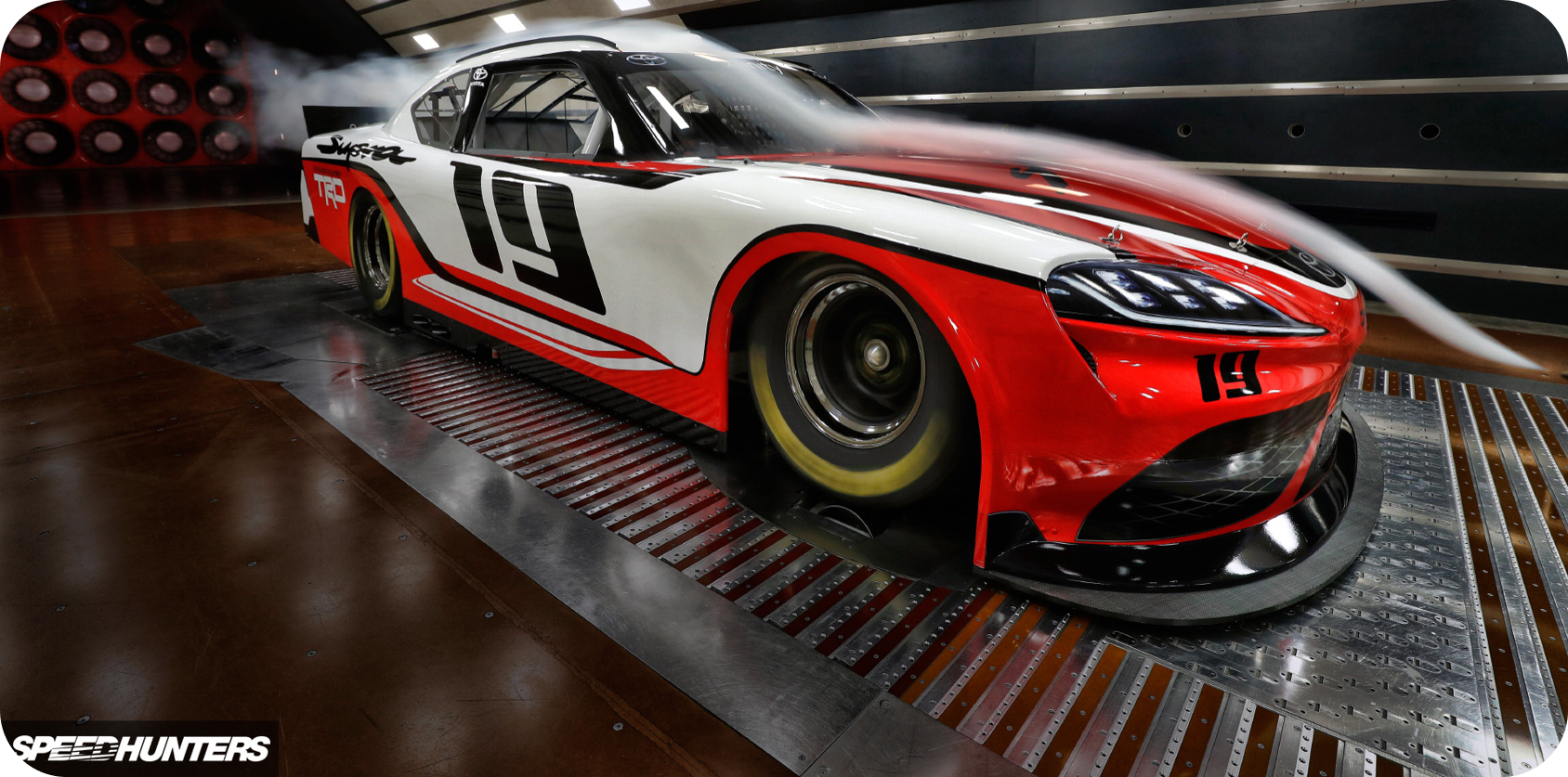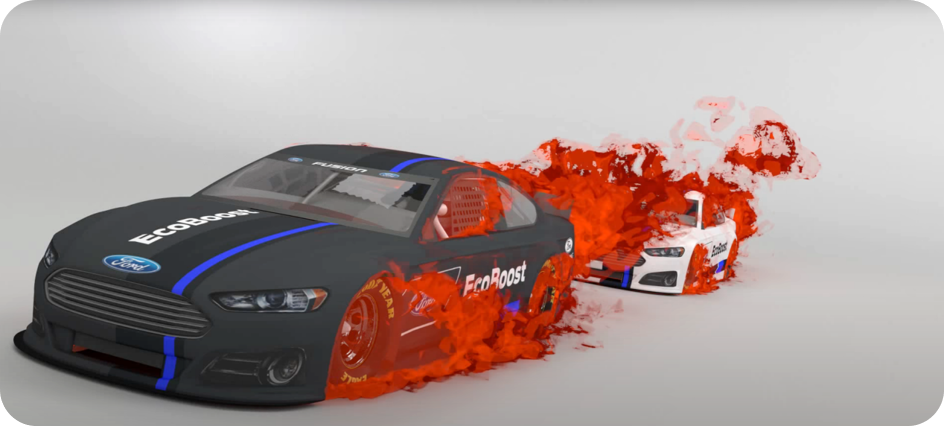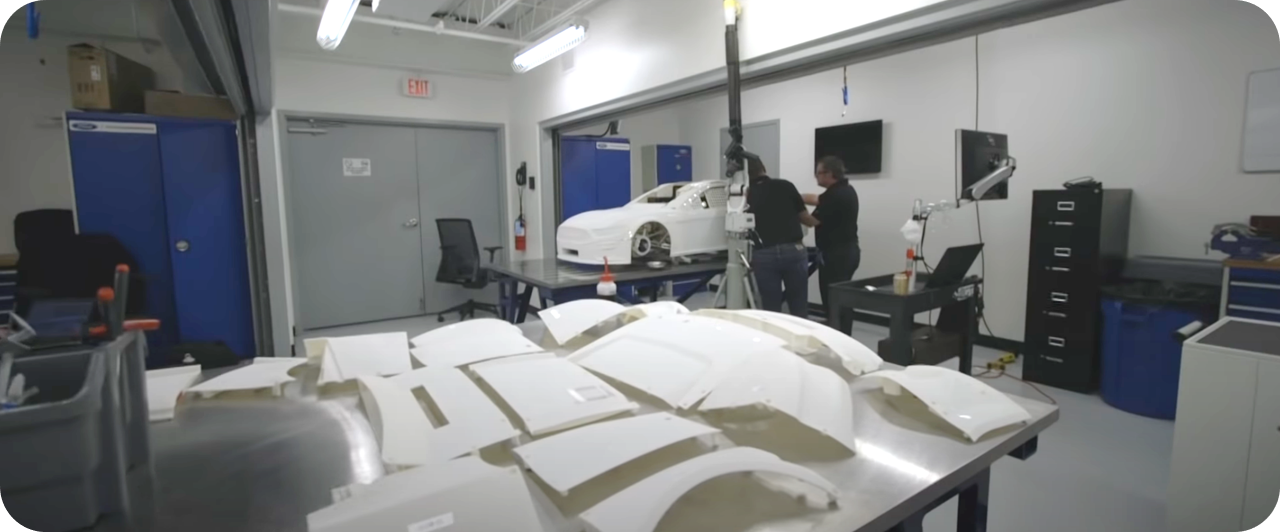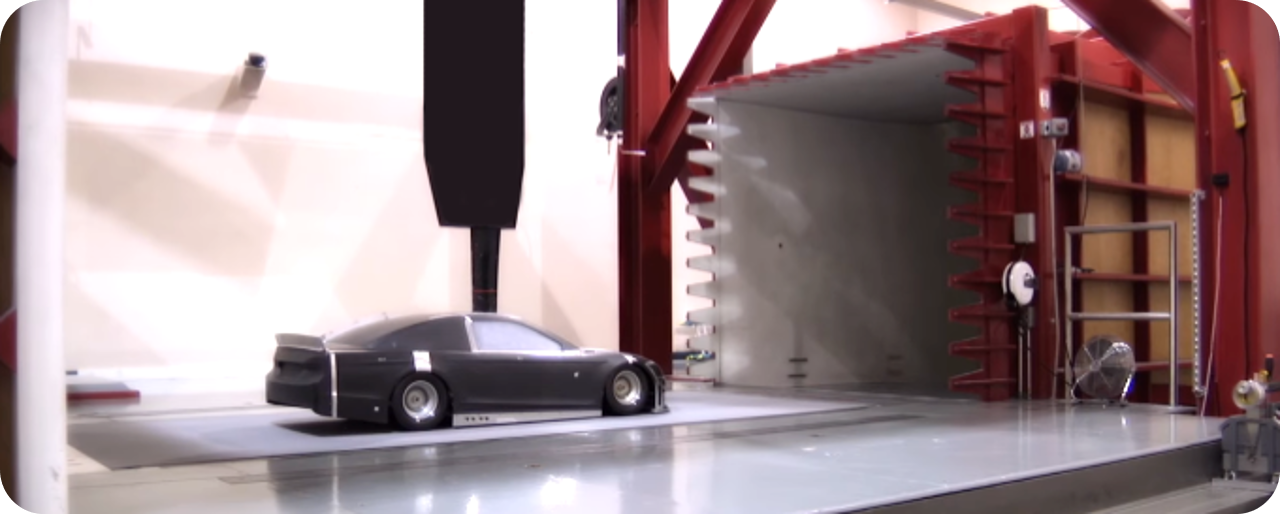IV - Test Engineering #

Toyota Supra in the AeroDyn Wind Tunnel.
For sake of respecting existing confidentially agreements, the topics below are discussed broadly and without revealing any I.P.
Introductory Thoughts #
The aerodynamicist has multiple avenues to develop the performance of the car. Each provides unique insight, but each has failings as well. Success in the role relies on knowing what tools to trust (and which ones not to) for a given development item.
CFD #
Much of the development starts off in computational domain. This is because it is (relatively) low expense and allows the flowfield to be understood quantitatively. However, correlation is difficult, even with high resolution DES (Detached eddy simulation) models.
The flow around a NASCAR CUP car is fundamentally transient & highly turbulent, especially in the underbody. Modern CFD codes still struggle with turbulence, as much of it has to be modeled rather than solved. As the performance increments on a NASCAR car are so small, otherwise acceptable errors becomes significant for vehicle development. On the flip side, CFD allows for exploration of phenomenon that are not practically possible with other methods (drafting, exhaust flows..etc).
My day to day work flow with CFD is to use a pre-processor to set up simulations in a heavily modified OpenFOAM-based CFD code. Following convergence, I look for insights to feed into the rest of the development pipeline.

Two car drafting simulation, courtesy of TotalSim.
Scale Testing #
The next stage in the development work flow is to move into the physical domain. A scale model is excellent resource. The entire vehicle is fully parameterized, allowing one to do exhaustive testing and granular optimization of each part of the car in highly modular fashion. Additionally, a scale model allows for each geometry to be quickly assessed over a full range of vehicle attitudes. However, practical concerns create concessions in the testing methodology of the scale model. This concessions give way to correlation hurdles between scale & full scale, casting doubts on certain qualitative and quantitative phenomenon.
My tenure as an aerodynamicist has required a lot scale wind tunnel testing. This entailed defining test objectives, monitoring telemetry, performing data analysis, and writing detailed test reports.


50% scale car being prepared to test at Penske Technology Group in Mooresville, NC, courtesy of Ford.
Full Scale Testing #
Finally, the most significant development tool is full scale wind tunnel testing, in which a 1:1 geometry is subjected to 180mph flow. This is the closest to on-track conditions that can be achieved in a controlled, largely repeatable test environment.

Full scale car testing at WindShear Wind Tunnel in Concord, NC, courtesy of Rodney Childers
However, even full scale wind tunnels have drawbacks:
-
Full scale testing is an extremely expensive endeavor. For sake of controlling costs, the amount of test time is highly limited by the governing body. The limited time that is available often just becomes an avenue to confirm performance seen with the other tools.
-
There’s little time for dynamic, exploratory runs in the wind tunnel. The test plan needs to be adhered to tightly to maximize efficiency.
-
Tunnel repeatability, while often acceptable, can cast a shadow over results due to the small margins of downforce & drag being chased.
-
Tightly controlling tolerances when rapidly doing changes in the tunnel is a discipline all its own.
Concluding Thoughts #
As the old adage goes, “All models are wrong, but some are useful”. Matching a development item to the ideal tool is not a trivial task, but through the design of methodical testing practices, a team can begin to carve out a sizable advantage over the competition.